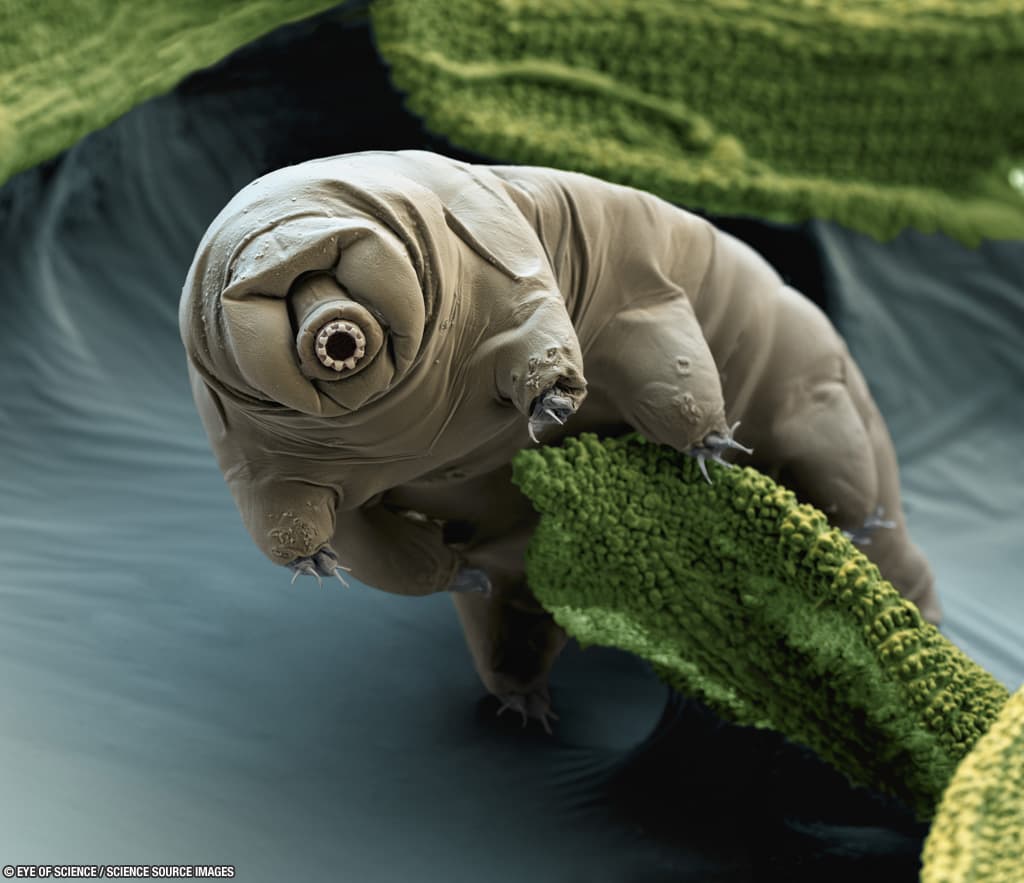There’s a creature on earth that can survive the most extreme conditions on (and thanks to humans off) the planet! It’s called a tardigrade, but people also call it a “waterbear” or “moss piglet.”
Tardigrades are aquatic eight-legged animals no longer than one millimeter in length and they live usually in moss and sediments at the bottom of lakes.
There are over 1,000 identified species of Tardigrades and while most conduct a simple existence, some take more risks. Scientists have found Tardigrades in boiling hot springs and buried under Himalayan glaciers.
This uncanny ability for adaptation has been tested to the extreme. Tardigrades can survive being frozen to -200 degrees Celsius and heated to 150 degrees. They can withstand being put under the pressure of 6,000 atmospheres. And if you think radiation would stop them, you’d be wrong: they can absorb a thousand times the deadly dose of radiation that humans can without dying.
Since they can survive on Earth with no problems, scientists in 2007 decided to send them to the final frontier. They exposed a sample of dehydrated tardigrades to the vacuum of space, and some were even exposed to solar radiation. When the sample was returned to Earth 68% of those not exposed to radiation survived, and even the
So, what’s their secret? Tardigrades are able to enter a death-like state that allows them to survive for decades. If the condition of the environment changes, tardigrades curl up into a ball-shaped state called ‘tun’: they become a dry lifeless ball with metabolic activities as low as 0.01%. The state is reached thanks to the production of a particular sugar, called trehalose, in the cells of the animal. Trehalose creates a gel in which the different components of the tardigrade’s cells are suspended.
The dehydrated tun state is not the only ace up the sleeve of the tardigrades. If the temperature around the tardigrades falls below freezing, they can create a cold-resistant tun which prevents the formation of ice crystals. Even lack of oxygen doesn’t stop them. If tardigrades find themselves in a low oxygen environment, they slow their metabolism, stretch, and relax in order to maximise the amount of water and oxygen that enters their cells.
We don’t know why tardigrades have evolved this large set of skills, and we don’t really understand where they come from. But one thing is clear, with their skills they are going places!
